How to stop spam emails (Gmail, Outlook, Yahoo Mail)
Email spam can feel like a never-ending battle. You block it, filter it, and move it to junk and, somehow, new irrelevant offers, phishing attempts, and unsolicited messages keep coming in.
Most email providers allow you to block emails and report them as spam. While filtering unsolicited emails individually will reduce their number temporarily, we recommend that you take the longer way, tracing the root causes of your spam problem and eliminating them.
How? Read on to find out.
Updated on: March 01, 2024
There is no way to stop spam emails permanently. After all, the tools and tactics spammers use are evolving all the time. However, there are quite a few internet hygiene tips you can follow to stop the flood of email spam from inundating your inbox.
How to stop spam emails, in short:
- Remove your email and personal data from data brokers
- Opt out of mailing lists
- Unsubscribe from newsletters
- Use secondary emails, temporary emails, or aliases instead of your primary email
- Use a third-party spam filter or create custom email filters in gmail
- Report and block spam email from repeated offenders
- Leverage your device spam blocking features
Keep reading to learn how to do this in detail.
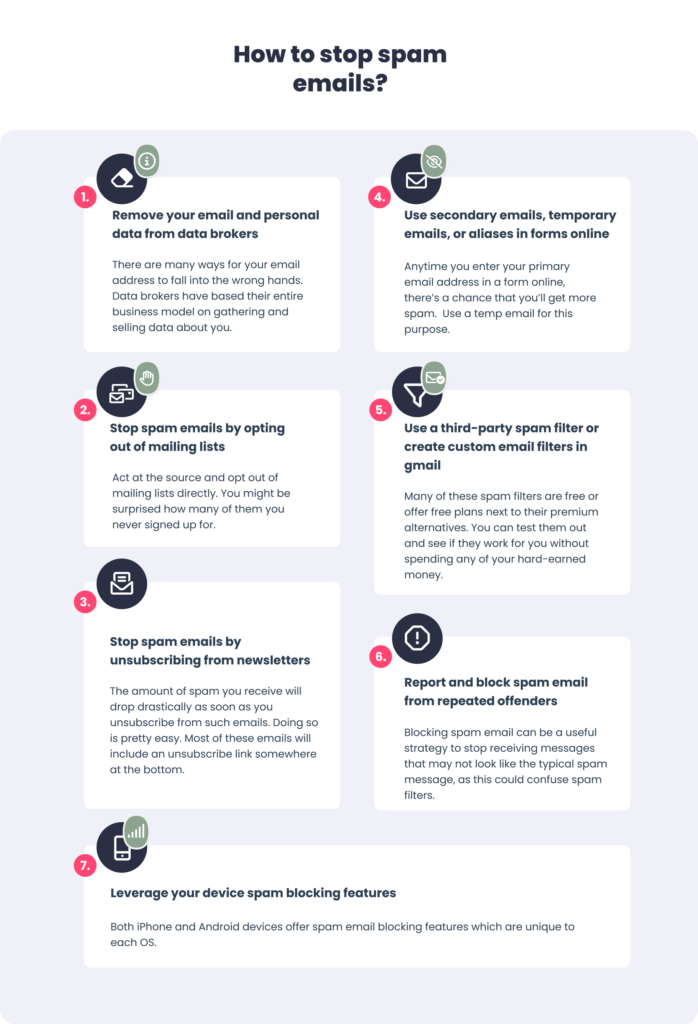
Remove your email and personal data from data brokers
There are many ways for your email address to fall into the wrong hands. Some of them are completely legal, like your internet service provider (ISP) selling your email and browsing data to marketers. Plus, data brokers have based their entire business model on gathering and selling data about you.
Fortunately, many states have laws in place that oblige companies that hold and trade in your data to remove it when asked.
So, what can you do about removing your data from data brokers?
- You can email each data broker individually in the hope that they’ll comply with your requests. It’d take an estimated 300+ hours to do this for every data broker that might be dealing in your personal information.
- You can use a service like Incogni and let someone else do this on your behalf. This isn’t free, but neither is the time you’d otherwise spend jumping through data brokers’ hoops and arguing points of law over email.
Removing your data doesn’t have to be complicated
It’s easy for data brokers to find and sell your most sensitive information. Taking your data off the market should be just as easy! For just $6.49 per month, Incogni sends out hundreds of recurring opt-out requests*.
Don’t waste any more time opting out one by one. Let us deal with data brokers, so you don’t have to!
Use DATA-REMOVAL-JULY at checkout to get an additional 10% discount.
* See the full list of data brokers Incogni covers here.
Stop spam emails by opting out of mailing lists
Act at the source and opt out of mailing lists directly. You might be surprised how many of them you never signed up for. This approach, though drastic, is very effective. Take the necessary steps to opt out of marketing lists and newsletters. You can easily identify accounts associated with your email address by following this post.
Additionally, remove your name from lists for pre-screened credit and insurance offers. To find out how to do all this, read our detailed article on How to Stop Junk Mail.
We’re all guilty of subscribing to newsletters we don’t read, or entering our email to get a discount code, only to receive news about products and promotions in the future.
Related: How to delete all promotions in Gmail
The amount of spam you receive will drop drastically as soon as you unsubscribe from such emails. Doing so is pretty easy. Most of these emails will include an unsubscribe link somewhere at the bottom. Click on it to stop getting similar emails in the future. If this doesn’t work, you can usually unsubscribe on the company’s website or by emailing its support team.
Be very careful before clicking any links, and make sure the email comes from a legitimate sender. Most phishing emails are designed to look like legitimate emails yet include malicious links that will end up harming you. So, don’t click on any links unless you’re sure they’re safe.
Use secondary emails, temporary emails, or aliases instead of your primary email
Anytime you enter your email address in a form online, there’s a chance that whoever set up the form will use that address to send you spam, or sell the address to someone else.
To prevent spam messages we recommend that you:
- Use a secondary email address when you need to register for something that you’ll use infrequently or that’s likely to send you spam mail.
- Use a temporary email provider for the times when you just need to enter an email address to bypass a website asking you to register.
Use a third-party spam filter or create custom email filters
Your email provider may be doing a good job of filtering out spam and sending it straight to the junk folder. But two filters are better than one. So if you want an extra protective screen, a third-party spam filter is something to consider.
There are plenty of options to choose from, such as SpamTitan, Spamdrain, Mailwasher, and Trustify to name just a few. Many of these spam filters are free or offer free plans next to their premium alternatives. You can test them out and see if they work for you without spending any of your hard-earned money.
If a third-party spam filter is not for you, the next best thing you can do is to create an advanced email filter.
Create advanced email filters to automatically block spam
Sometimes, you need to go the extra mile and manually filter the messages you want from all those unwanted emails. Here’s how you can customize your spam filter:
- Navigate to the Gmail webmail interface on a PC or Mac and click the gear icon at the top right of the Gmail window.
- Choose “see all settings.”
- Go to “filters and blocked addresses” and click “create new filter.”
- Enter the filter parameters:
- From: the sender’s email address (here’s where you can enter the addresses of known spam accounts).
- To: recipients’ email addresses, there’s no need to add yours, unless you use different aliases.
- Subject: words in the subject line that are unique to spam messages.
- Has the words: sets the filter to pick up these words anywhere in the email.
- Doesn’t have the words: checks the email for the absence of certain words.
- Size: how much disk space the email takes up.
- Has attachment: a simple toggle to check if the email comes with an attachment.
- Click on “create filter.”
- Choose “delete it” to immediately send messages matching your filter to the trash.
Protect Your Privacy, Take Control of Spam
Regain control over your digital life and reduce the annoyance of relentless spam calls, texts, and inbox clutter. Subscribe today to safeguard your data and peace of mind.
Report and block spam email from repeated offenders
Blocking spam email can be a useful strategy to stop receiving messages that may not look like the typical spam message, as this could confuse spam filters. But it will only make sense when you want to stop email from certain individuals or companies that use consistent sender addresses.
How to report and block spam emails in Gmail
Here’s how to mark multiple emails at once and report them all as spam without ever opening them. You can do so on PC, Mac, Android, and iOS:
- Log into your Gmail account.
- Find unwanted emails in your Gmail inbox.
- Select all unwanted emails.
- Click “report spam,” it’s the hexagonal icon with an exclamation mark in the middle.
- If you’re doing this on an Android or iOS phone, click the three-dots icon in the top-right corner and then tap “report spam.”
If you realized that an email was spam only after opening it, here’s the procedure:
- Click on the “report spam” button. For smartphones, tap the three-dot icon in the top-right corner.
- You might be asked whether you want to “report spam and unsubscribe” or just to “report spam.” Choose the first option if the spam email looks like a newsletter or something similar.
Block spam messages on Yahoo Mail
Just like Gmail, Yahoo Mail is a long-standing email service that is used by millions of people. They do a pretty good job of filtering obvious junk mail, but some more sophisticated scams can find their way into your inbox. You can get rid of them by following these simple steps:
- Open your Yahoo Mail app.
- Select an unwanted email or click “edit” to select multiple emails at once.
- Tap on the “more” icon with three horizontal dots underneath it.
- Choose the “mark as spam” option to make sure all further emails from the sender go straight to the spam folder.
Block spam emails on Outlook
Unlike all the email service providers above, Outlook will only allow you to filter spam on the desktop version. Here’s the process:
- Login and go to your Outlook mail inbox.
- Select an email that you want to block.
- In the middle of the top part of the page, select “junk” and “block.”
- Confirm by pressing “OK.”
You can also block spam senders on Outlook through its “junk email” settings, where you can enter specific emails or domains and add them to the blocking list.
Mark spam messages on AOL
The process for blocking spam emails on AOL is very similar to most other email applications:
- Press the ”new emails” button to access your email on the AOL app.
- You’ll find an empty checkbox near all of your emails. Check the ones you want to mark as spam.
- Click “more” under the three horizontal dots in the bottom-right corner of the app.
- Tap on “mark as spam” to send the emails to the spam folder.
Leverage your device spam email blocking features
Both iPhone and Android devices offer spam email blocking features which are unique to each OS. Let’s look at them in detail.
How to stop spam emails on iPhone
In addition to the previously mentioned steps, there are specific measures tailored for iPhone users to combat spam effectively.
Here are three iPhone-specific ways to stop spam emails:
- Add the senders of spam emails to the block list
- Block unwanted emails on your Apple Mail app
- Get rid of spam through iCloud Mail
Here’s how to do that.
Add the senders of spam emails to the block list
This one is pretty straightforward. Simply add the senders of spam emails to the block list through the settings of your iPhone.
Here’s how to block spam emails on iPhone:
- go to the “mail” app
- find the message in question
- tap the sender’s address
- tap “block this contact” and confirm.
1
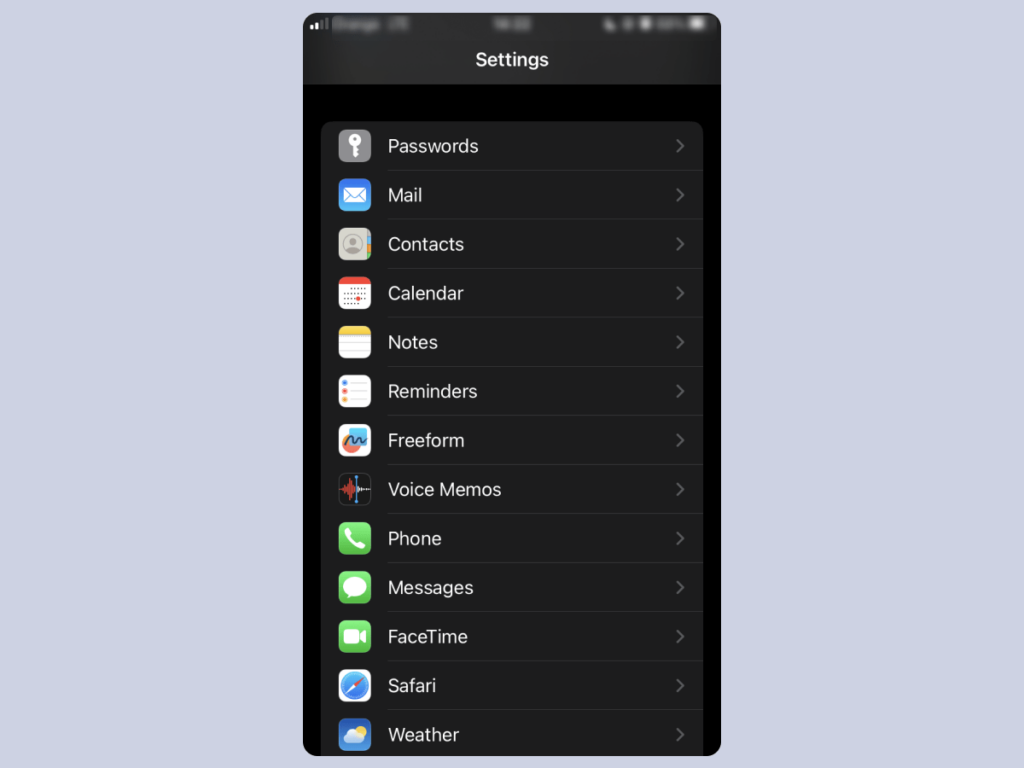
2
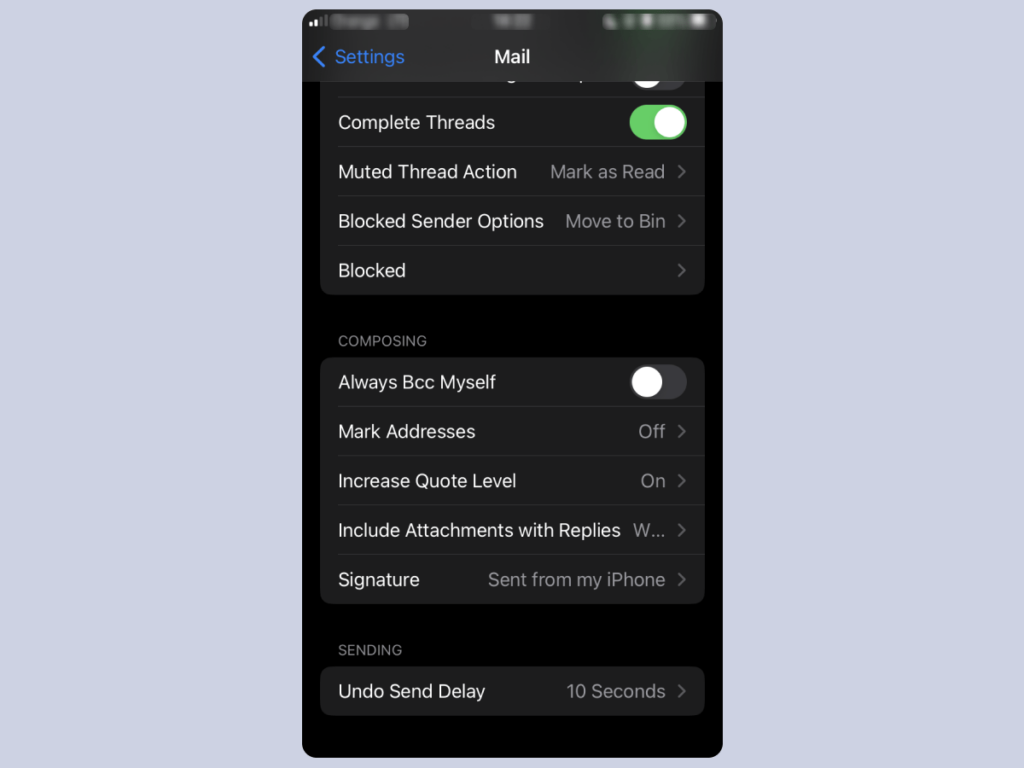
3
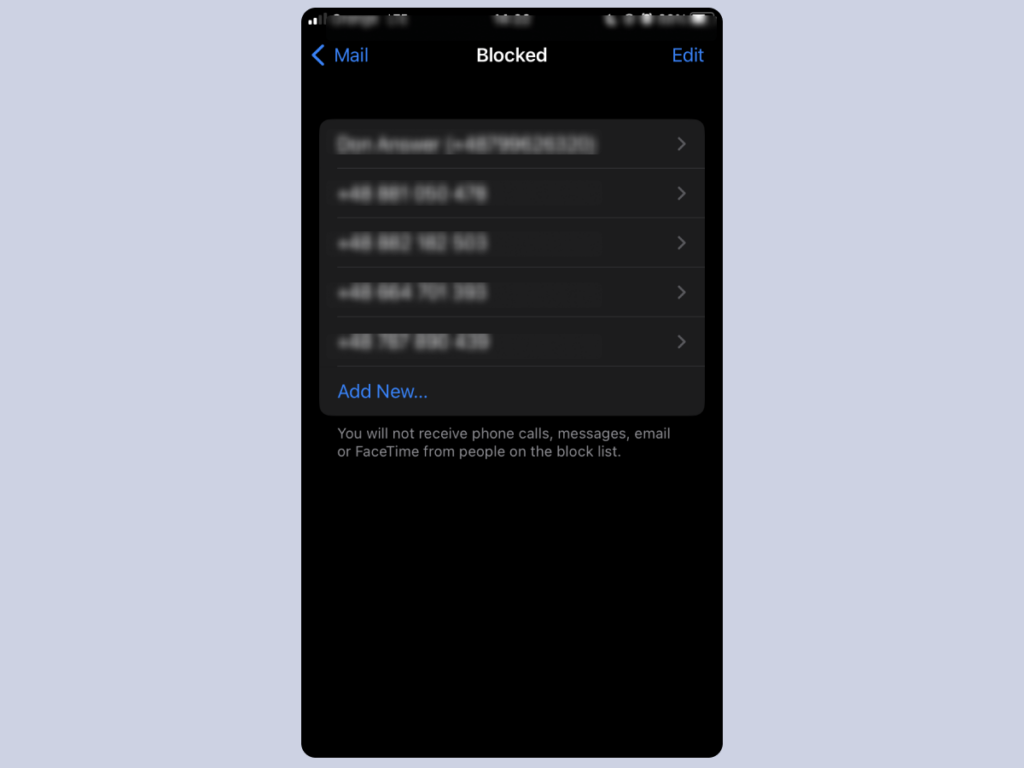
To block email from several senders on iPhone:
- go to “settings”
- select “mail”
- tap “block”
- tap “add new.”
Block unwanted emails on your Apple Mail app
You can connect your email to the Apple mail app that comes pre-installed on all iOS devices. It’s easy to set up and use, which is why it’s become so popular with iPhone users.
Here’s how you can block unwanted emails on your Apple Mail app:
- Open the Apple mail app.
- Open the message that you would like to block and tap on the sender’s name.
- Click on their name or the email highlighted in blue.
- Select the “block this contact” option.
- When prompted “are you sure you want to block this contact?” tap “block this contact.”
1
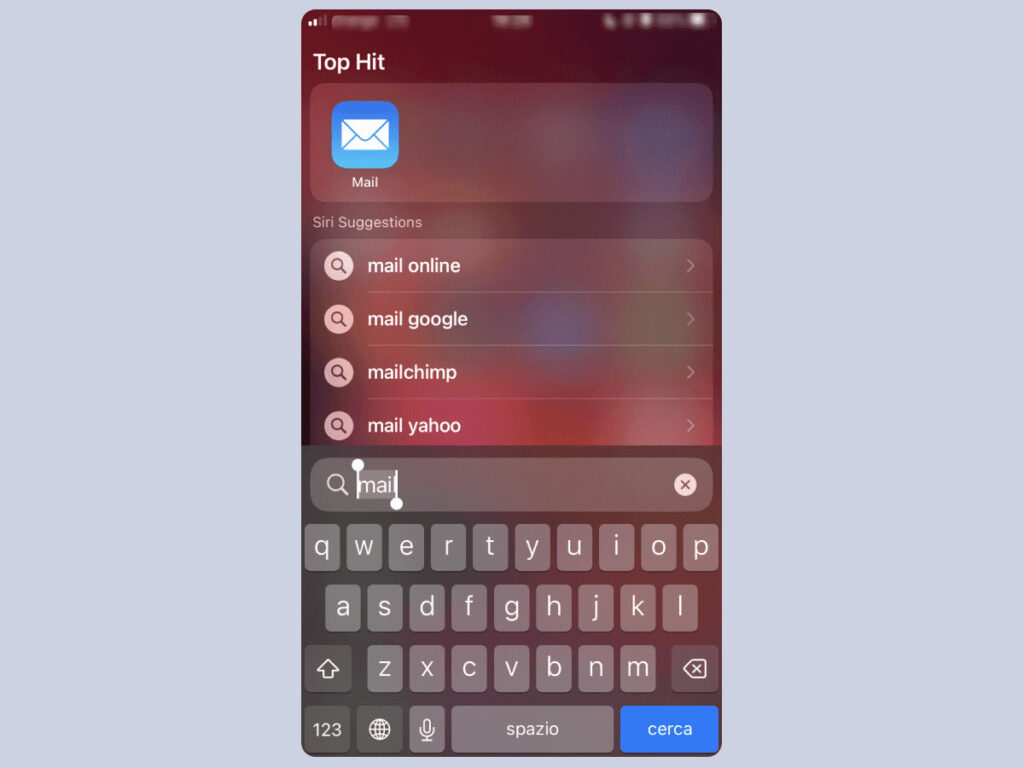
2

3
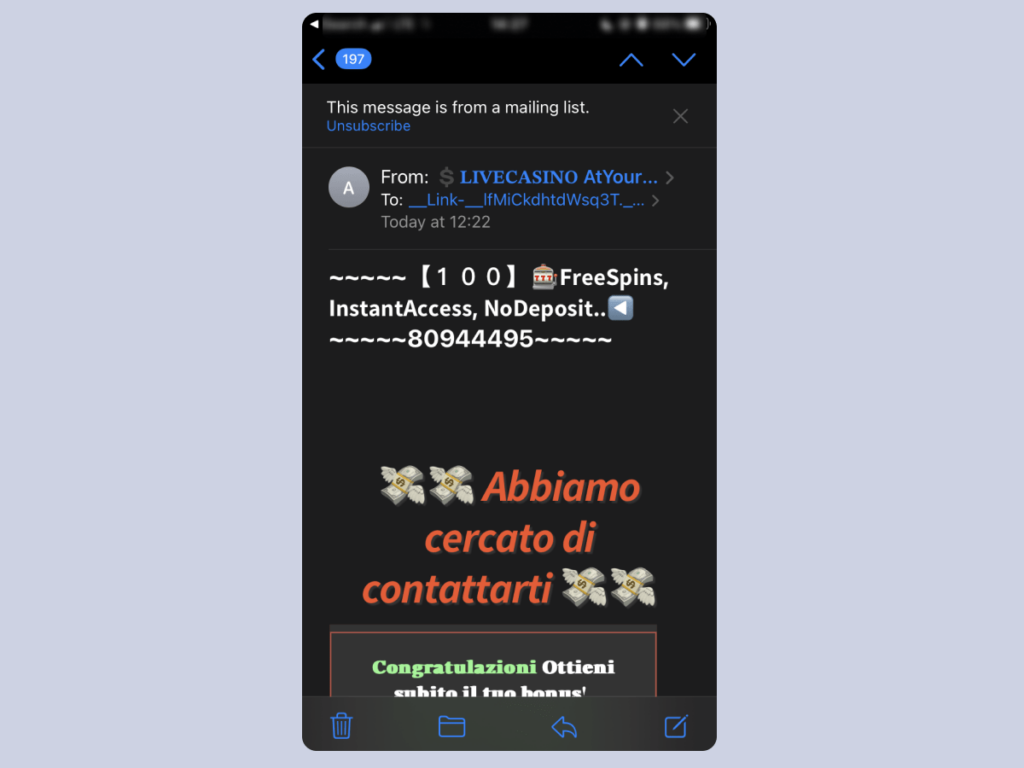
4
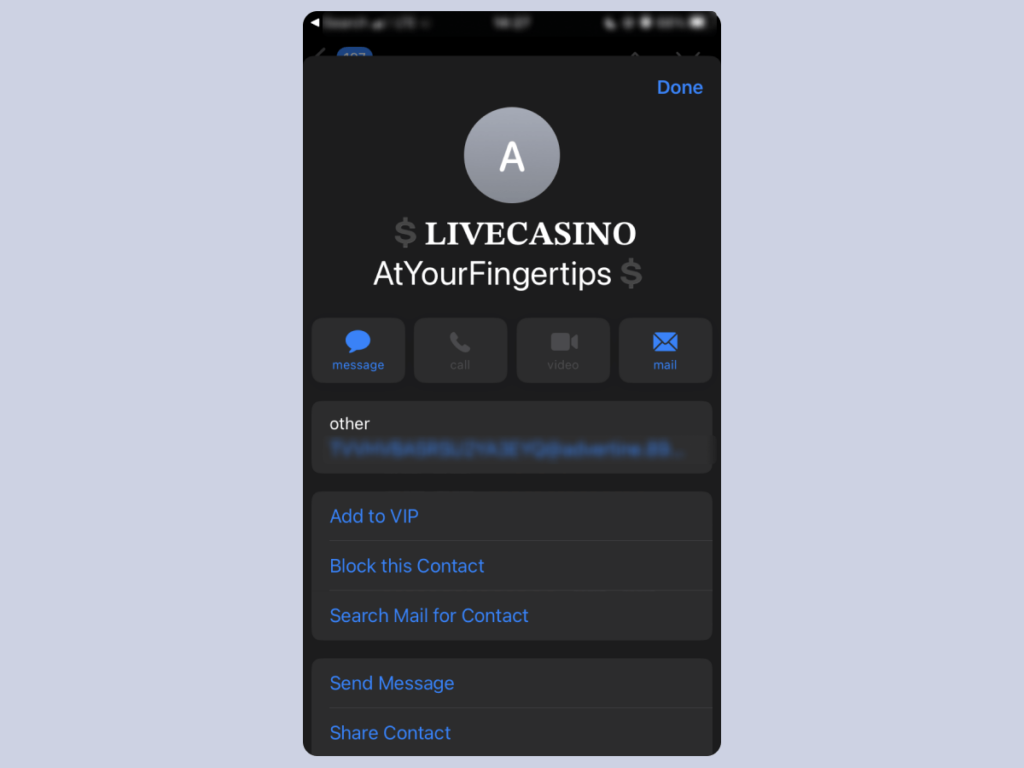
5
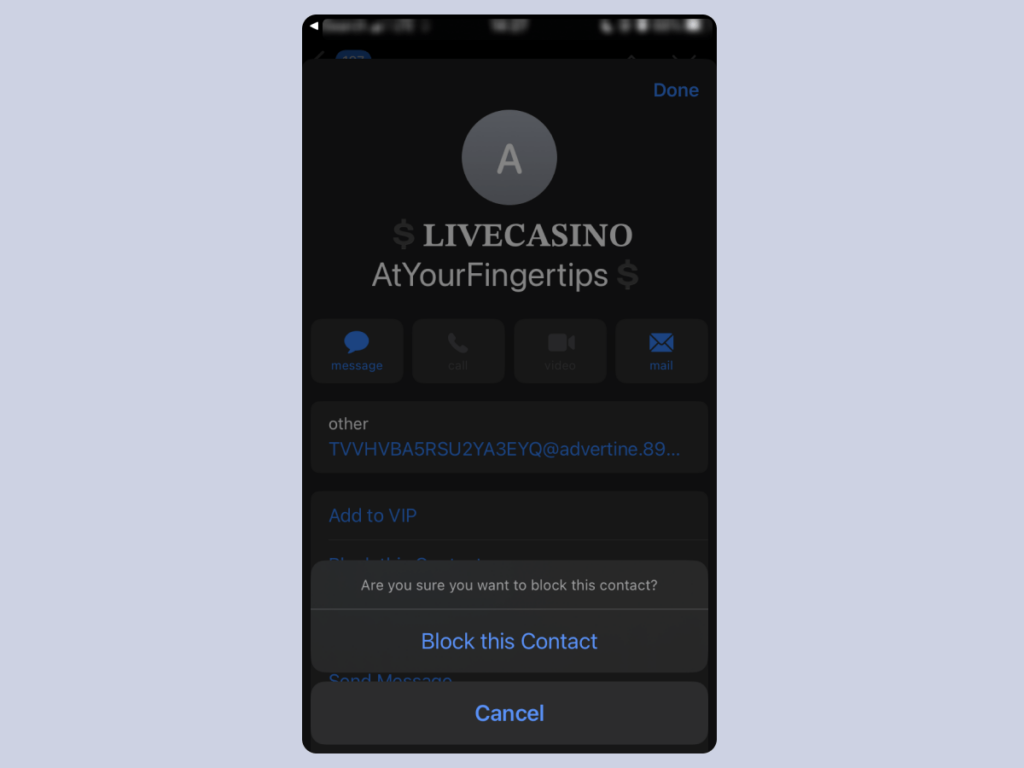
Get rid of spam through iCloud Mail
Leave the best for last, as they say. Blocking spam through iCloud Mail is one of the best options for iPhone users to get rid of spam. But be aware that this process requires a computer to complete.
- Connect to your iCloud Mail account. Click the cog wheel and then “preferences.”
- Find the “rules” option and select “add a rule.”
- Configure the rule to “if a message is from.” Enter the email of the spam sender. Select “then” and “move to trash.”
1
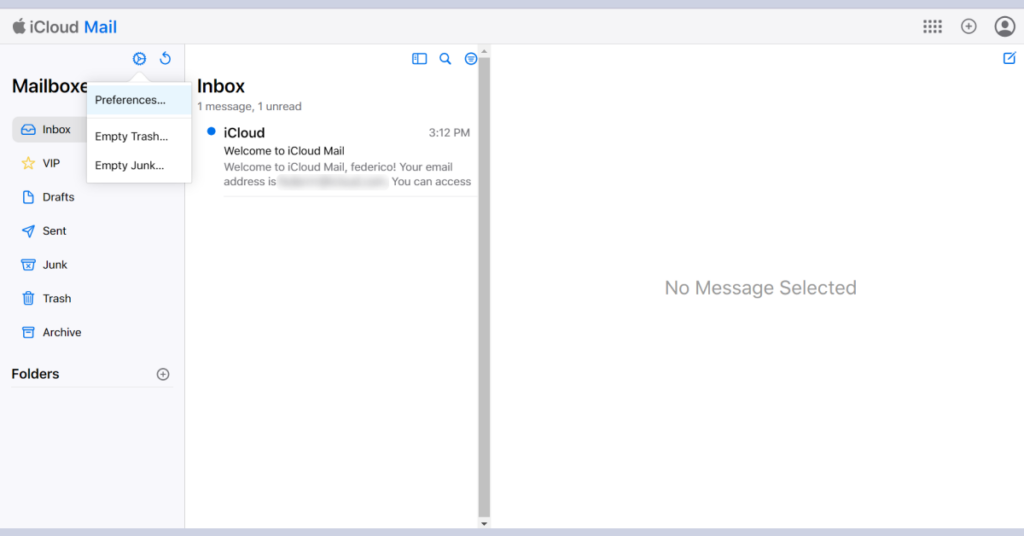
2
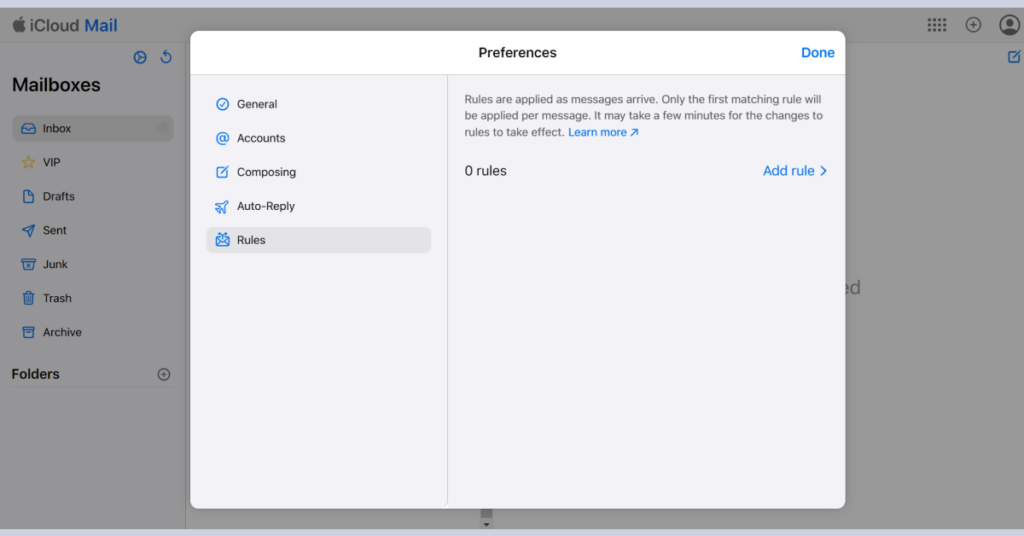
3

Once you set up any of the spam-blocking options from the list above, the amount of spam you receive will be drastically reduced. The only downside here is that it’s a very manual process. You’ll have to keep blocking spam from new senders as it comes into your inbox.
Blocking unsolicited emails on Android
Android devices don’t offer any built-in email spam blocking options. You will need to use the options offered by your email provider. Alternatively, you can use a third party app for identifying and reporting spam. Just make sure to check requested permissions before installing it on your phone, as some of these apps (especially when they are free) can cause more harm than good.
Is it possible to keep your email spam-free?
Yes, it is possible to clear your inbox of spam if you follow the tips above and stick to them. A big portion of the spam emails you receive is a direct result of your online activity. But just because you’re getting plenty of spam now, it doesn’t mean you can’t get rid of it.
Check out these related spam-stopping guides:
- How to identify accounts associated with your email address
- How to stop spam texts
- How to stop spam calls
- How to Stop Junk Mail
- How to block texts from emails
- Stop mail for a deceased person
FAQ
Is there a way to permanently stop spam emails?
No, spammers are always looking for ways to defeat the measures you take. However, by following our guide, you can drastically cut back the amount of spam mail you see in your inbox.
Is it better to block or delete spam?
It’s better to block and then delete spam as this lets Gmail know to block such spam the next time it gets delivered to your inbox.
Does Gmail have a spam blocker?
Yes, it does. Spam emails get delivered to the spam folder in Gmail. That’s where you can delete spam, check if any actual emails got mistakenly blocked, and so on.
Does the iPhone have an email spam blocker?
While the iPhone does not have an automatic email spam filter, it does have mail settings that allow you to block spam email senders. Here’s how:
– Open your iPhone settings and find the “mail” option.
– Find and tap on the “blocked” settings option.
– Tap “add new” and enter the contact you want to block.
Why am I suddenly getting spam emails on my iPhone?
There are two likely reasons why you’re suddenly getting spam emails on your iPhone: your data was leaked, exposing your email to spammers and other bad actors, and/or you’ve been signing up to more email newsletters than you realize.